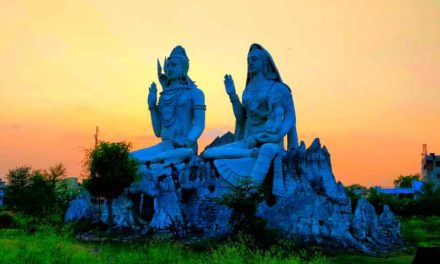The Kaushitaki Upanishads are ancient Sanskrit texts that are part of the Rigveda, one of the four Vedas that form the foundation of Hinduism. They are also known as Kaushitaki Brahmana Upanishads, as they are part of the Kaushitaki Aranyaka or the Shankhayana Aranyaka, which are texts that deal with rituals and philosophy in the forest. ¹²
The Kaushitaki Upanishads contain some of the most profound teachings on the nature of the self, the soul, and the supreme reality, known as Brahman. They also offer practical guidance on how to live in harmony with nature and attain liberation from the cycle of birth and death. In this blog post, we will explore some of the key themes and insights from these Upanishads that can help us live a more peaceful and fulfilling life.
The Self and the Soul
One of the main topics discussed in the Kaushitaki Upanishads is the distinction between the self and the soul. The self is the individual personality that we identify with, which is composed of our body, senses, mind, intellect, and ego. The soul is the eternal essence that animates our self, which is part of Brahman, the ultimate reality. ³
The Kaushitaki Upanishads teach us that our self is not our true identity, but a temporary manifestation that undergoes constant change and suffering. Our soul, on the other hand, is our true identity, which is unchanging, blissful, and immortal. The goal of life is to realize our true nature as the soul and transcend our attachment to our self. ⁴
One of the ways to achieve this realization is through meditation. The Kaushitaki Upanishads describe various methods of meditation that help us calm our minds and focus on our inner self. For example, one method is to meditate on a mantra, such as “Aum”, which represents Brahman. Another method is to meditate on a symbol, such as a lotus, which represents purity and enlightenment. A third method is to meditate on a deity, such as Vishnu or Shiva, who are manifestations of Brahman.
By meditating on these objects of concentration, we can gradually detach ourselves from our external distractions and tune into our inner voice. This voice is our soul, which guides us toward our true purpose and happiness.
The Soul and Brahman
Another important topic discussed in the Kaushitaki Upanishads is the relationship between the soul and Brahman. Brahman is the supreme reality that pervades everything in existence. It is beyond description and comprehension by human logic and language. It is the source of all creation and destruction, all joy and sorrow, all knowledge and ignorance. It is also the essence of all beings and things, including our own soul.
The Kaushitaki Upanishads teach us that our soul is not separate from Brahman, but a part of it. Our soul is like a drop of water in an ocean of Brahman. Our soul has the same qualities as Brahman, such as existence, consciousness, and bliss. However, due to our ignorance and delusion, we forget our true nature and identify ourselves with our limited self. This causes us to suffer from bondage and rebirth in this world of duality and imperfection.
The way to overcome this ignorance and delusion is through knowledge and devotion. The Kaushitaki Upanishads explain that we can gain knowledge of Brahman by studying the scriptures, listening to the teachings of wise teachers, and contemplating their meaning. We can also express devotion to Brahman by performing rituals, offering prayers, singing praises, and serving others with love and compassion.
By cultivating knowledge and devotion, we can gradually awaken to our true nature as Brahman. We can realize that we are not different from Brahman, but one with it. We can experience a state of blissful union with Brahman that transcends all duality and imperfection.
The Soul and Nature
A third topic discussed in the Kaushitaki Upanishads is the connection between the soul and nature. Nature is the manifestation of Brahman in the form of the five elements: earth, water, fire, air, and space. These elements combine to form the various forms of life and matter in the universe. Nature is also governed by the laws of karma, which determine the consequences of our actions and the destiny of our souls.
The Kaushitaki Upanishads teach us that our soul is dependent on nature for its existence and evolution. Our soul takes birth in different bodies according to our karma, which is made of the five elements. Our soul also interacts with nature through our senses, which are also made of the five elements. Our soul also influences nature through our actions, which create positive or negative karma.
The Kaushitaki Upanishads also teach us that our soul is not bound by nature, but can transcend it. Our soul is not limited by the qualities and characteristics of our body and senses but can develop higher faculties such as intuition and wisdom. Our soul is not subject to the laws of karma but can overcome them by performing righteous actions and seeking liberation. Our soul is not confined by the cycle of birth and death but can attain immortality by merging with Brahman.
The way to transcend nature is through detachment and renunciation. The Kaushitaki Upanishads advise us to detach ourselves from our attachment to our body and senses, which are temporary and unreliable. We should also renounce our attachment to our worldly possessions and pleasures, which are sources of bondage and suffering. We should instead focus on our inner self, which is eternal and blissful.
By detaching and renouncing ourselves from nature, we can live in harmony with it. We can respect nature as a manifestation of Brahman and a provider of our needs. We can protect nature from exploitation and pollution and preserve its balance and beauty. We can also appreciate nature as a teacher and a friend that helps us grow and evolve.
Conclusion
The Kaushitaki Upanishads are ancient texts that contain profound wisdom on the nature of the self, the soul, and Brahman. They also offer practical guidance on how to live in harmony with nature and attain liberation from the cycle of birth and death. By studying and applying their teachings, we can enrich our lives with peace, joy, and fulfillment.
Works Cited:
(1) Kaushitaki Upanishad – Wikipedia. https://en.wikipedia.org/wiki/Kaushitaki_Upanishad
(2) The Kausitaki Upanishad English Translation by Jayaram V – Hindu Website. https://www.hinduwebsite.com/kausitaki-upanishad.asp
(3) Kaushitaki Upanishad – Hinduism Made Simple – Wara KarmaYoga. https://texts.wara.in/vedas/upanishads/kaushitaki.html
(4) Kaushitaki Upanishad – Vyasa Mahabharata. https://www.vyasaonline.com/kaushitaki-upanishad/





